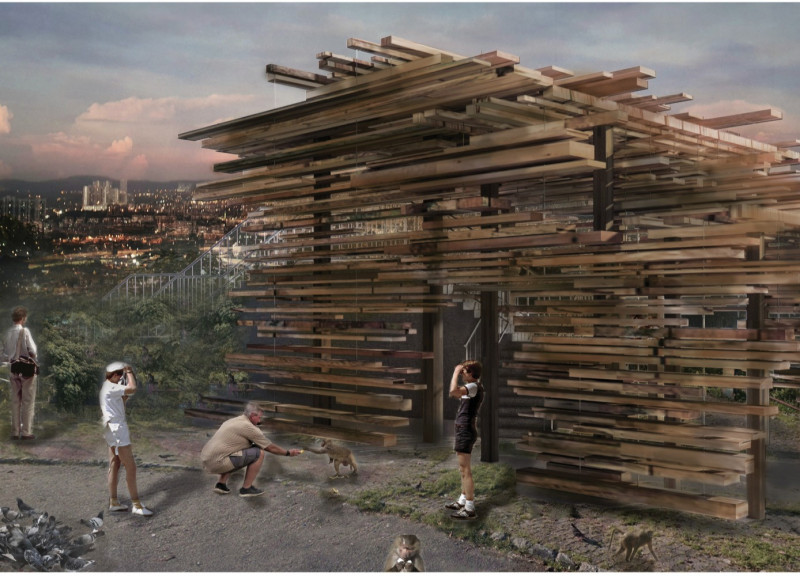5 key facts about this project
RE:Stack TIMBER is a temporary pavilion located in Bukit Gasing, a green area that connects Selangor and Kuala Lumpur. Designed to educate the public about timber as a sustainable building material, the pavilion emphasizes the importance of environmental care. The concept revolves around using reclaimed timber, demonstrating its potential through an engaging architectural form that invites interaction with the surrounding nature.
Architectural Concept
The design highlights the educational value of timber architecture by repurposing wood that would otherwise be discarded. This approach prioritizes sustainability and acknowledges the unique characteristics of reclaimed materials. Each timber piece carries a story, and the structure serves as a testament to the narratives inherent in the materials during its creation.
Sustainability through Structural Design
With a focus on minimizing new materials, the pavilion employs a straightforward stacking system. Contrasting timber strips are suspended by steel rods, providing shelter while showcasing the concept of deconstruction. The design intentionally reveals imperfections, reinforcing the authenticity of the materials while demonstrating the versatility of timber in modern architecture.
Integration with Context
Positioned at the end of a hiking trail, the pavilion attracts various visitors, from locals to nature enthusiasts. The structure adapts to the site's landscape, elevating itself to align with an existing staircase and producing views of the surrounding greenery. This thoughtful positioning enhances the experience for visitors, maintaining a connection to the natural environment.
Experiential Engagement
The pavilion serves as a bridge between visitors and nature, offering shelter while allowing local wildlife habitats to remain intact. This design encourages exploration within a protected space, inviting interaction with the landscape. By promoting sustainable timber construction, the pavilion positions itself as a platform for raising awareness about environmental issues.
The timber strips, each with its own history, come together to form a structure that reflects the local forest. It stands as a reminder of the connection between the built environment and nature, inviting people to consider their role in preserving the ecosystem.



















































